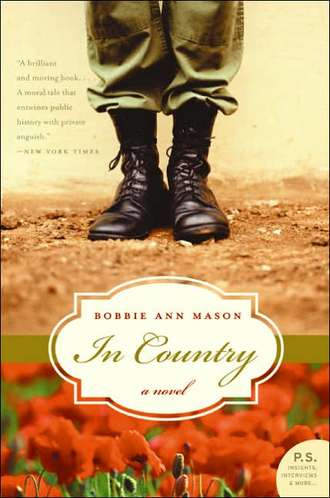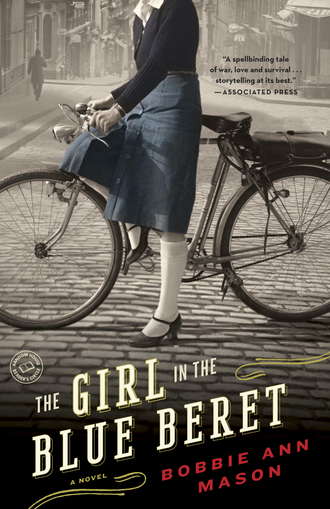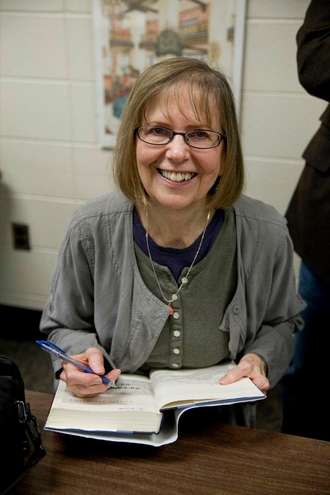If you are an avid reader and love good stories, especially those spun by Kentucky writers, the name Bobbie Ann Mason should be familiar. For over 35 years Mason has developed into a strong literary and cultural presence. Known for her ability to weave a strong tale and to accurately describe the characters and ways of the folk in the Bluegrass neck-of-the-woods, she has reached into imaginations, imprinting minds with indelible pictures that linger long after the last page.
We wondered to what sort of star Bobbie Ann Mason hitches her literary wagon. Every writer has their own writing process. For some, it’s always a matter of following a step-by-step guide. For others, the process is a routine that comes naturally.
“Writing for me,” said Mason, “is like solving a mystery, doing a puzzle and arranging all of the pieces together, finding and fitting the different parts.”
The ongoing themes of solving puzzles, intricate relationships, and war pervade her works. Originating ideas, cultivating them, and bringing them to a level that has proved worthy of her many awards is part of a process that has been developed and refined through many short stories, novels, a biography, an autobiography, and an upcoming novella.
Born May 1, 1940, close to Mayfield, Kentucky, Bobbie Ann spent much of her time on the family farm, reading. The tranquility and isolation of her parents’ dairy farm ignited a curiosity about lifestyles that seemed as though they must be happening in some parallel universe. “It was an isolated corner of Kentucky, far from any city. My parents encouraged me to read, but there were few books available, certainly nothing called literature,” she said in a recent interview with Transatlantica.
This began Mason’s adventures into the popular young adult literature of the time that eventually led her to all things literary: the Bobbsey Twins and Nancy Drew mysteries, now-classics that were on the bedside table of every young girl in 1950s America.
It was perhaps her early experiences with mysteries and the awakening of her inquisitive nature that informed this ongoing theme in her work.
“A concrete detail will hit my imagination,” she said. “For instance, I may see a man wearing a carnation and wonder ‘why a carnation?’ Or perhaps the man appears drunk and I ask, ‘what is he drunk on?’ Maybe there’s something else going on. Once I have established that image, it seems to unfold from there. Sometimes it could be a word or a detail, maybe just a sound.”
As a student at the University of Kentucky Mason discovered Hemingway, Salinger, and Fitzgerald, delivering Bobbie Ann into a whole new world of literary possibilities.
Her process began to develop, always starting with key images that initially set it in motion, seemingly random pieces that eventually coalesce.. “Then the images start to get translated into words and the words lead me, often surprise me, with where they go and what they do. Very often it is an image of some sort that sparks the inspiration for a story. That stick of dynamite found in a box of letters may very well have been the trigger for a new yarn. In the opening of Shiloh, Norma Jean is lifting weights. The novel In Country was initially inspired by the sight of a couple of teenagers selling flowers on a street corner.”

“I’ve always been fascinated with mysteries,” she explained. “It was this, perhaps, that led me to Vladimir Nabokov, whose Ada was the subject of my dissertation. In graduate school I read quite a bit of him and was thrilled with the way he wrote. His life story was fascinating as well, being exiled from Russia and then becoming one of the foremost prose stylist in English.”
By her late-thirties, Bobbie Ann was writing short stories. The New Yorker published her first in 1980. “It took me a long time to discover my material,” she said. “It wasn’t a matter of developing writing skills, it was a matter of knowing how to see things. And it took me a very long time to grow up. I’d been writing for a long time, but was never able to see what there was to write about. I always aspired to things away from home, so it took me a long time to look back at home and realize that that’s where the center of my thought was.”
Mason doesn’t search for material. Instead, she relies on serendipity. ”It can be scary. A novel can bubble up in the space of a minute. It just kind of erupts. Then in five minutes you realize you’ve just committed the next five years of your life.”
At first, as she began writing In Country, Mason didn’t know that it would become a story about Viet Nam. “It backed into that eventually. It’s ultimately about Sam, the main character, not that particular war. It could have just as easily been set during World War II.”
The story found its way to the big screen in 1989 as a film produced and directed by Norman Jewison, starring Bruce Willis and Emily Lloyd. The screenplay by Frank Pierson and Cynthia Cidre was based on Mason’s novel.
Her biggest challenge? “The hardest part is the beginning. Working toward getting enough to go with. For example, writing a novel. It may take me a year to develop enough material to motivate me to go further. Then when I have a draft I’ve got something to work with. At that point it gets easier and it gets fun. The hardest part’s the blank page. The words reveal things. It’s all about language, which is music, the rhythm of it, the sound of it. The visual imagery: I try to find some way to put it all together, and then maybe I’ll have a story.”
Like many writers, Bobbie Ann goes through a lot of drafts, going back over the material, honing, shaping, reworking. “The coalescing doesn’t just come along. It’s hard work. It’s hard getting a perspective on it and being critical of what it means. I flash back and forth between a creative process of not thinking, just writing, and a critical process where I stand back and look and say ‘what have I done? Does this work?’ I may have more feeling for this passage with notes to myself for how I can improve it for the next draft.”
Mason said her stories are stitched together from the tiny details she has learned to look for in daily life. “I’m an observer of detail. I notice what people have in their shopping carts at the grocery, what they are saying when I overhear them, what they’re wearing, what kinds of jobs they have.”
And then it becomes a matter of allowing herself to be carried along by the momentum of the emerging story. “You’re absorbed in this thing you’re watching and writing about.”

Bobbie Ann’s other works include The Girl in the Blue Beret; Elvis Presley; Feather Crowns; and Zigzagging Down a Wild Trail, the last two winners of the Southern Book Critics Circle Awards.
Among the finest contemporary Southern writers, Mason has been the recipient of the Guggenheim Fellowship, the Arts and Letters Award for Literature from the American Academy of Arts and Letters as well as the National Endowment for the Arts grant. She is also a former writer-in-residence at the University of Kentucky.
Check out Bobbie Ann’s website, where you will find a complete list of works, a wonderful video with Mason and Wendell Berry, and information about events.





